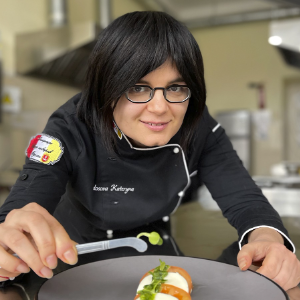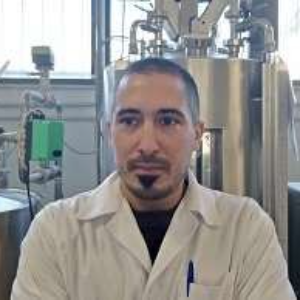Surendra Singh, Banaras Hindu University, India
Essential soil elements that end up in the human diet are supplied through food from plants that took the elements up from the soil during growth depend on the soil for their nutritional needs, A major portion of the nutrients needed for human health originate with the soil. Soil [....] » Read More











































Title : Innovative solutions in food safety training
Robert Mancini, Kansas State University, Canada
The importance of training food handlers is critical to effective food hygiene; however, there have been limited studies on the effectiveness of such training. Food safety training courses are administered worldwide in attempts to reduce outbreaks in food service, retail and temp [....] » Read More
Title : Trade policies and organic food
Suparna Bhattacharya, University of Nebraska Lincoln, United States
Organic foods are produced using farming methods that may be less harmful to the environment while also leading to foods that are better for human health. Many environmental ethicists who believe that there is a moral obligation to protect the environment may view organic food as [....] » Read More
Title : Sea buckthorn extracts as potential food additives, assessment of their antibacterial and antioxidant properties.
Barbara Chilczuk, University of Life Sciences, Poland
Growing demand for value-added products and functional foods is encouraging manufacturers to consider new additives that can enrich their products and help combat lifestyle diseases. The healthy properties of sea buckthorn have been recognized for centuries. This plant has a high [....] » Read More
Title : First report of bacteriophages for bio control of salmonella enteritidis at the north Colombian coast in typical Caribbean cheese (queso costeño)
Maryoris Elisa Soto Lopez, Food Engineer Department, Colombia
Queso costeño is an autochthonous product of the Colombian Caribbean coast. It is made manually from raw milk and unfortunately, it has been associated with foodborne illnesses in the past, due to the presence of pathogenic microorganism such as Escherichia Coli and Salmon [....] » Read More
Title : Effect of Roasting Conditions on the Lipid Composition of Arabica and Robusta Coffee Beans
Paolo Lucci, Polytechnic University of Marche, Italy
Coffee is considered as the most popular beverage in the world for its unique sensory properties and physiological effects. From a chemical composition point of view, lipids are major coffee components and may contribute to loss of sensory quality. The roasting process is respons [....] » Read More
Title : Screening the influence of antioxidants on food product with the rapid small scale oxidation test
Carolin Edinger, Anton Paar ProveTec Gmbh, Germany
The quality of fats, oils, and food products in general strongly depends on their oxidation stability. In this contribution a new method for evaluating the oxidation stability of food products is introduced. Under accelerated conditions (elevated temperature and pure oxygen press [....] » Read More
Title : Stability tests of mixed extracts based on blackberry leaves during freezing and freeze-drying process and storage
Marzena Pabich, University of Life Sciences in Lublin, Poland
Medicinal plants commonly consumed worldwide contain different chemical substances that display a broad spectrum of biological activities. One of such plants is the blackberry, a valuable fruit plants which leaves are also used in folk medicine. The blackberry leaves (BL) contain [....] » Read More
Title : Lipid matrix-based formulations for sustained release of vitamin C
Jenni Pessi, Dsm-firmenich, Switzerland
Vitamin C has several essential functions in the body, such as supporting the immune system, acting as an antioxidant, and maintaining healthy skin and bones. However, the uptake of vitamin C is limited due to saturation of the active transport system. Lipid based encapsulation o [....] » Read More
Title : Packaging-material and surface-heat-transfer-coefficient-based tTrial calculations for the temperature distributions in container fed food products during thermal processing with packaging materials and surface heat transfer coefficient
Shoichi Inaba, Toyo Institute of Food Technology, Japan
Typically, cComputing the the internalside temperature distributions in container food products may will allows the the manufacturers of people who that is are developing new packaged food products s to identify acquire the indicators regarding of the heat degradation of food pro [....] » Read More
Title : Evaluation of the isobologram method for the assessment of mixtures based on black currant leaves
Monika Staszowska Karkut, University of Life Sciences, Poland
The polyphenols are the substances commonly found in plants and occurs in plant derived food. They may exhibit synergistic properties, contributing to potential health benefits. Blackcurrant leaves contain unique quercetin derivatives whose contribute to anti-inflammatory, antivi [....] » Read More
Title : Effect of Different Storage Conditions on Quality Parameters of “Mild” Extra Virgin Olive Oil
Paolo Lucci, Polytechnic University of Marche, Italy
“Mild” extra virgin olive oil (EVOO) is highly appreciated by consumers as it is characterised by lower bitterness and spiciness, parameters which are positively correlated with the concentration of phenolic compounds. Phenols, together with tocopherols, are strong an [....] » Read More
Title : Characteristic changes in functionalized polyvinly alcohol based nanofibers after being stored with smoked salmon meat
Turgay Cetinkaya, Yalova University, Turkiye
It is important for consumers to predict the quality of processed fish products before they consume them. In this study, it is aimed to evaluate the characteristic changes in polyvinly alcohol-based nanofibers after being stored with smoked salmon. For this purpose, electrospun n [....] » Read More
Title : Physical, chemical and microbiological quality control of soft wheat circulating in Douala and Yaoundé (Cameroon)
Ngono Mballa Epse Abondo, University of Yaoundé 1, Cameroon
Seventy percent estimated annual world production (600 million tons) of wheat is used for food production. Milling is very important in the processing of wheat and its transformation into flour, which is then processed into products such as bread, cakes, cereals, macaroni and noo [....] » Read More
Title : Effect of the addition of water on the physicochemical characteristics of a gluten-free bread based on non-conventional flour
Maria Antonia Hernandez Aguirre, Biotic Products Development Center of the National Polytechnic Institute, Mexico
Wheat is currently the cereal that most people consume in the world since it was a wild plant, it has been a staple food for humanity for thousands of years, it is used in the production of many products for daily consumption. On the other hand, the world market for gluten-free p [....] » Read More
Title : Study of the acaricidal effect of a biomolecule of origin environmental protection against the parasite (varroa) of the honey bee Apis mellifera
Laribi Habchi Hassiba, University of SAAD Dahlab Blida 1, Algeria
Bio-pesticides from bimolecular are characterized by their degradability in the environment, their low toxicity to humans and their mode of action on pests. One of the most damaging pests is probably the Varroa destructor, parasitic mite of the honey bee Apis mellifera, it causes [....] » Read More